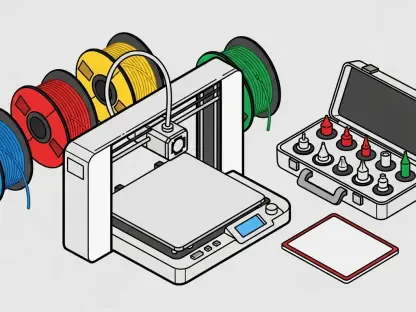In a striking policy move that could reshape the landscape of the $28 billion U.S. furniture import market, President Donald Trump has proposed tariffs on imported furniture, sparking intense debate across the industry. With a 50-day investigation set to conclude by late September, this initiative could be a turning point for a sector struggling with economic challenges and global competition. The tariffs aim to protect domestic manufacturers from foreign competitors, especially those in Asia, by making imported goods less competitive. Yet, this protectionist stance also risks disrupting established supply chains, increasing costs for retailers, and ultimately passing higher prices on to consumers. As stakeholders from manufacturers to investors assess the implications, a central question emerges: can this bold strategy ignite a revival for American manufacturing, or will it lead to unintended economic consequences that outweigh the benefits? This exploration delves into the multifaceted impacts of the policy on various aspects of the industry.
Domestic Gains and Challenges
The proposed tariffs could serve as a lifeline for U.S.-based furniture manufacturers seeking to regain market share from overseas competitors. Companies like La-Z-Boy, with 75% of production rooted domestically and a network of 370 stores, are well-positioned to benefit from reduced foreign competition. Despite facing challenges, such as a 24% decline in adjusted earnings per share in Q1 2026, the company’s financial stability—evidenced by $319 million in cash reserves and zero external debt—provides a strong foundation. If the tariffs effectively curb imports, domestic players could see a surge in demand, provided they seize this opportunity through innovation and operational improvements. The potential for expansion in regions like the Southeast U.S. further bolsters the outlook for manufacturers willing to adapt to changing market dynamics under this protective policy.
However, the path to revival is not without obstacles for domestic manufacturers, as internal challenges could temper the advantages offered by tariffs. Even with reduced competition, companies must address issues like declining sales in digital divisions and the need for streamlined processes to meet consumer expectations. For instance, La-Z-Boy’s digital-native segment, Joybird, reported a 14% sales drop in the same quarter, signaling that operational efficiency remains critical. The tariffs may provide a temporary buffer, but long-term success depends on the ability to innovate and maintain competitive pricing in a market sensitive to cost increases. Additionally, the broader economic environment, marked by high interest rates, could limit consumer spending on furniture, undermining potential gains. Thus, while the policy offers a promising edge, domestic firms must navigate a complex landscape to fully realize its benefits.
Retailers Under Pressure
For retailers heavily dependent on imported furniture, the proposed tariffs represent a significant threat to their business models. Wayfair, which sources 60% of its products from China and 80% from Asia, faces the daunting prospect of substantial cost increases that could either erode profit margins or force price hikes on consumers already squeezed by inflation. The company’s struggles in Q1 2026, reflected in declining same-store sales and a 20% drop in delivered sales for its Joybird division, highlight its vulnerability. If tariffs are implemented, such retailers may need to overhaul supply chains, potentially shifting to domestic sourcing or exploring alternative international markets. However, these transitions are costly and time-intensive, risking customer loss in a highly competitive digital marketplace where price sensitivity reigns supreme.
Beyond immediate financial pressures, import-reliant retailers must grapple with strategic dilemmas that could reshape their future. The need to pivot away from low-cost foreign suppliers might push companies like Wayfair toward premium pricing strategies, but this risks alienating their core customer base in a sluggish economy. Additionally, the uncertainty surrounding the tariffs’ implementation—coupled with potential legal challenges based on past court rulings against similar measures—complicates long-term planning. Retailers could find themselves caught between absorbing higher costs to maintain market share and passing them on to consumers, potentially dampening demand further. The stark contrast between domestic manufacturers and import-dependent retailers illustrates how the policy could fracture the industry into distinct camps, each facing unique risks and opportunities in an evolving economic landscape.
Broader Economic Implications
The ripple effects of the proposed tariffs extend far beyond the furniture industry, posing risks to the wider economy through inflationary pressures. Early indicators, such as a 0.9% rise in the Consumer Price Index for furniture and bedding reported in July, point to a subtle yet concerning trend of price increases, often referred to as “sneakflation.” In an environment already burdened by high interest rates and a cooling housing market, these added costs could further suppress consumer spending on big-ticket items like furniture. For many American households, tighter budgets might mean delaying purchases or opting for cheaper alternatives, which could stifle demand across related sectors. This dynamic raises critical questions about whether the tariffs’ protective intent might inadvertently worsen economic challenges rather than alleviate them.
Moreover, the potential for reduced consumer demand could create a feedback loop with far-reaching consequences for economic recovery. As furniture prices climb, related industries—such as home improvement and real estate—might experience slowdowns, given the interconnected nature of these markets. The housing sector, already strained, could face additional headwinds if consumers cut back on furnishing new homes or renovations due to cost concerns. Meanwhile, the polarized market response, with stock rebounds for domestic producers and sell-offs for importers, mirrors the uncertainty surrounding the policy’s broader impact. The tariffs, while aimed at bolstering U.S. manufacturing, risk amplifying existing vulnerabilities in global supply chains, potentially leading to shortages or delays that further frustrate consumers and businesses alike. This complex interplay underscores the delicate balance between protectionism and economic stability.
Investment and Market Dynamics
From an investment perspective, the furniture industry is becoming a divided landscape, with distinct opportunities and risks emerging under the shadow of the tariffs. Domestic manufacturers present a relatively safer bet for investors, particularly if the policy curtails foreign competition as intended. Firms with strong U.S.-based operations and financial resilience could see growth in market share and stock value, provided they address operational inefficiencies. However, success is not guaranteed, as consumer demand and economic conditions remain unpredictable variables. Investors must weigh these factors against the backdrop of a sector where short-term gains might mask longer-term challenges, requiring a cautious approach to capital allocation in this uncertain climate.
Conversely, import-reliant retailers pose a higher risk for investors, though not without potential for reward if adaptation strategies succeed. Companies facing margin compression from tariff-induced cost increases might still offer value if they can pivot to alternative sourcing or absorb expenses without losing customers. Legal uncertainties add another layer of complexity, as past Trump-era policies have been overturned in court, casting doubt on the tariffs’ ultimate fate. This volatility demands a balanced investment strategy, with close monitoring of regulatory developments and market trends. The furniture sector’s division into a two-tiered market reflects a broader tension in the economy, where policy decisions could either strengthen domestic industries or deepen divisions, leaving investors to navigate a landscape filled with both promise and peril.
Weighing the Future of Protectionist Policies
The debate over the tariffs encapsulates a larger national conversation about the effectiveness of protectionism in revitalizing American industry. On one hand, shielding domestic manufacturers from foreign competition could foster a resurgence in U.S. production, creating jobs and strengthening local economies. On the other hand, the risk of inflation, reduced consumer purchasing power, and strained global supply chains looms large, potentially offsetting any gains. The furniture industry serves as a microcosm of this tension, where short-term relief for some players might come at the expense of long-term stability for others. As the policy’s outcomes unfold, they could set a precedent for how protectionist measures are perceived and implemented across other sectors.
Looking back, the discourse around these tariffs highlighted a critical juncture for the furniture industry. The resolution of this policy debate prompted stakeholders to consider innovative solutions, such as investing in domestic production technologies or diversifying supply chains to mitigate future risks. For consumers, the focus shifted toward advocating for balanced policies that protect local industries without unduly burdening household budgets. Investors, meanwhile, were encouraged to adopt a forward-looking approach, prioritizing adaptability in response to shifting regulatory landscapes. Ultimately, the lessons learned from this period emphasized the need for a nuanced strategy, blending protectionism with economic pragmatism to ensure sustainable growth for the U.S. manufacturing sector.









